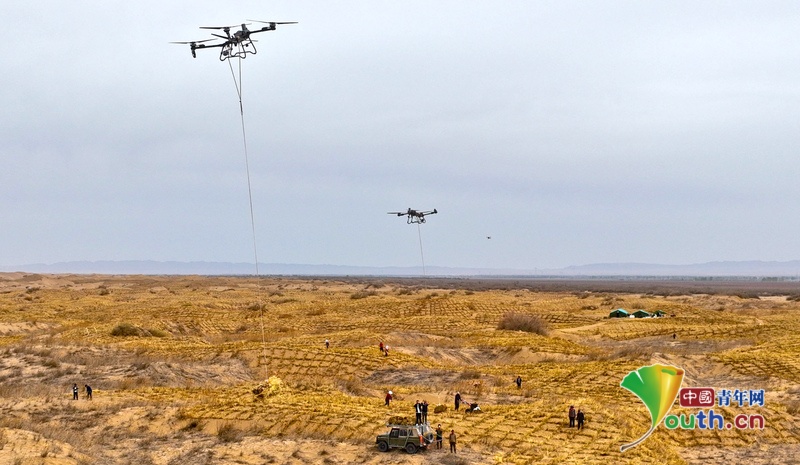
Beijing, April 27 (Youth.cn) - On April 25, 2025, at the Xishawor Desert Control Site of the Three-North Shelterbelt Program in Heiquan Town, Gaotai County, Zhangye City, Gansu Province, a technological revolution is unfolding. In the air, drone swarms execute precision airdrops of straw bundles across undulating dunes under operators’ deft control, slashing transport time for sand barrier materials. On the ground, sand barrier machines - both walk-behind and crawler-type - weave through golden waves, implanting straw 15 cm deep to create high-standard checkerboard barriers at a staggering rate of 30 mu (approximately 2 hectares) daily per machine, dwarfing the traditional manual capacity of 2 mu.
The mechanized symphony extends to Hongliu (Tamarix) shrub management, where advanced stubble harvesters leave smooth cuts under 5 cm tall, prompting rapid regrowth of tender shoots. This "desert-edge lockdown" strategy has shifted from labor-intensive methods to a "human-machine ballet," propelling 27,000 mu (about 1,800 hectares) of engineered sand fixation into its final phase.
Strategically located in central Hexi Corridor along Badain Jaran Desert’s southern fringe, Gaotai County battles 3.32 million mu of desertified land - 50.93% of its territory - making it a pivotal frontline in the Three-North Program’s Hexi Corridor-Taklimakan Desert Counteroffensive. Photo/CFP





